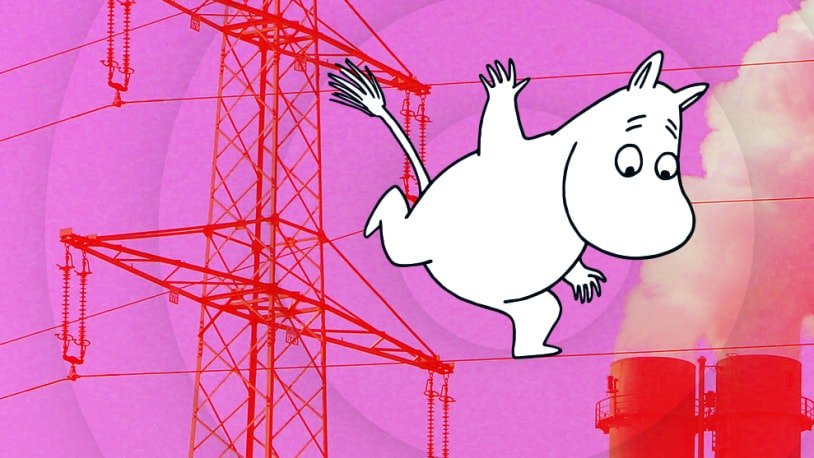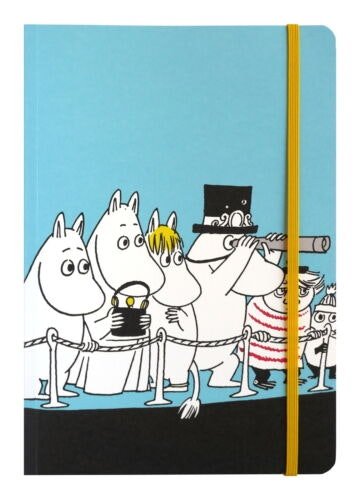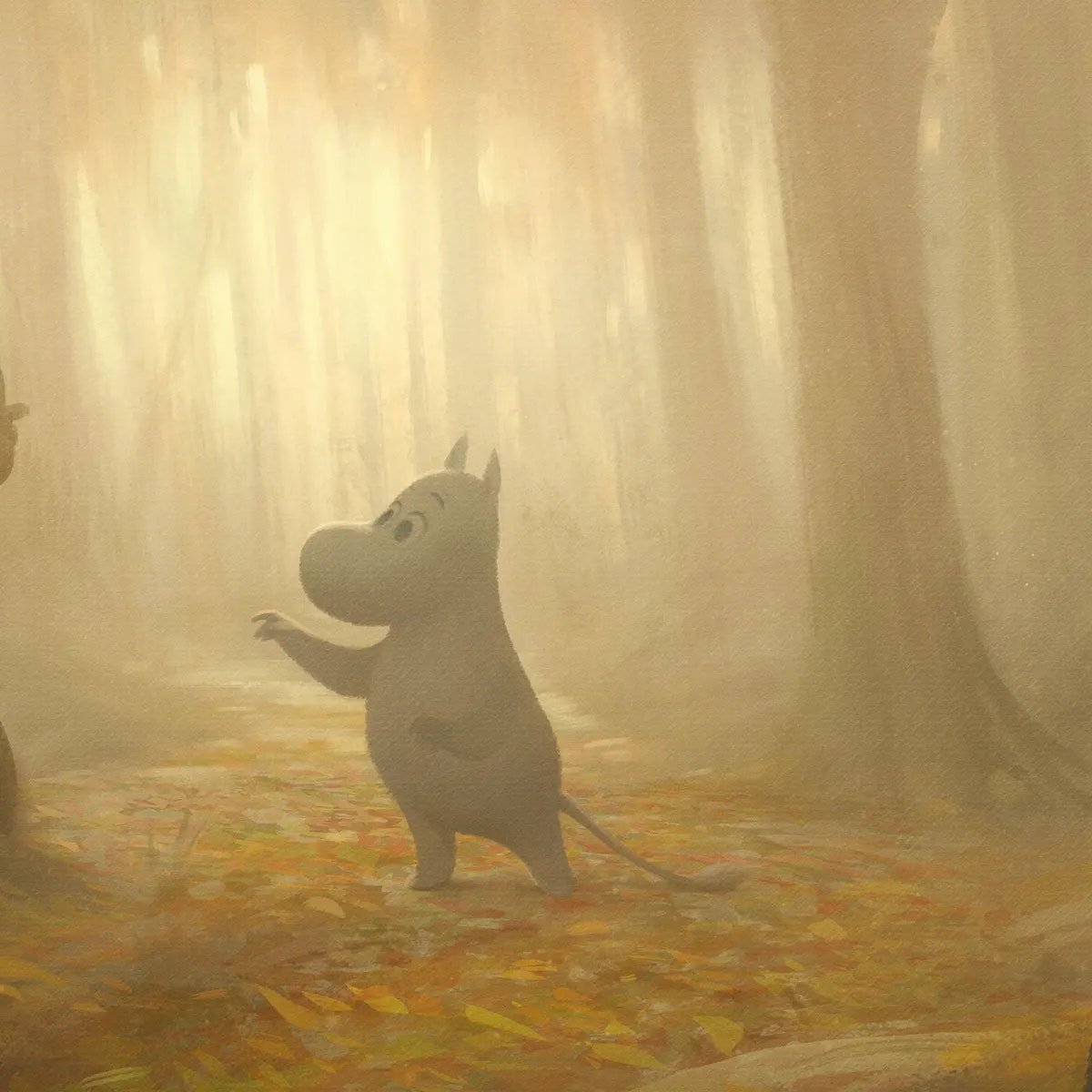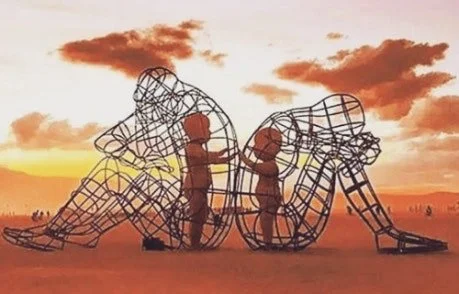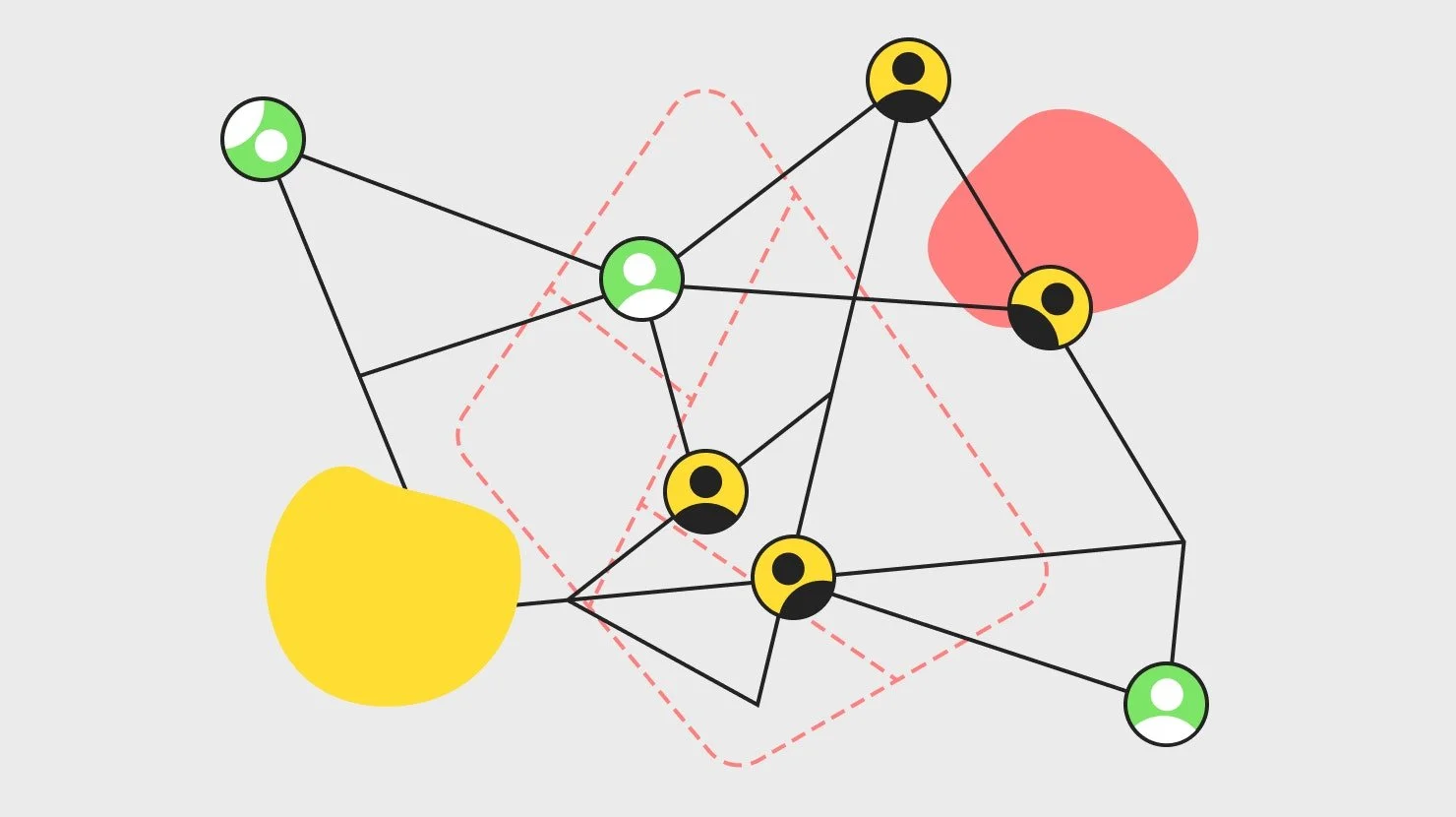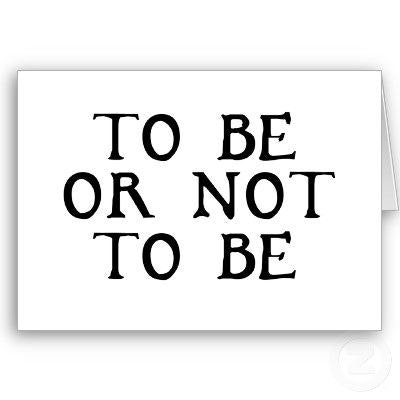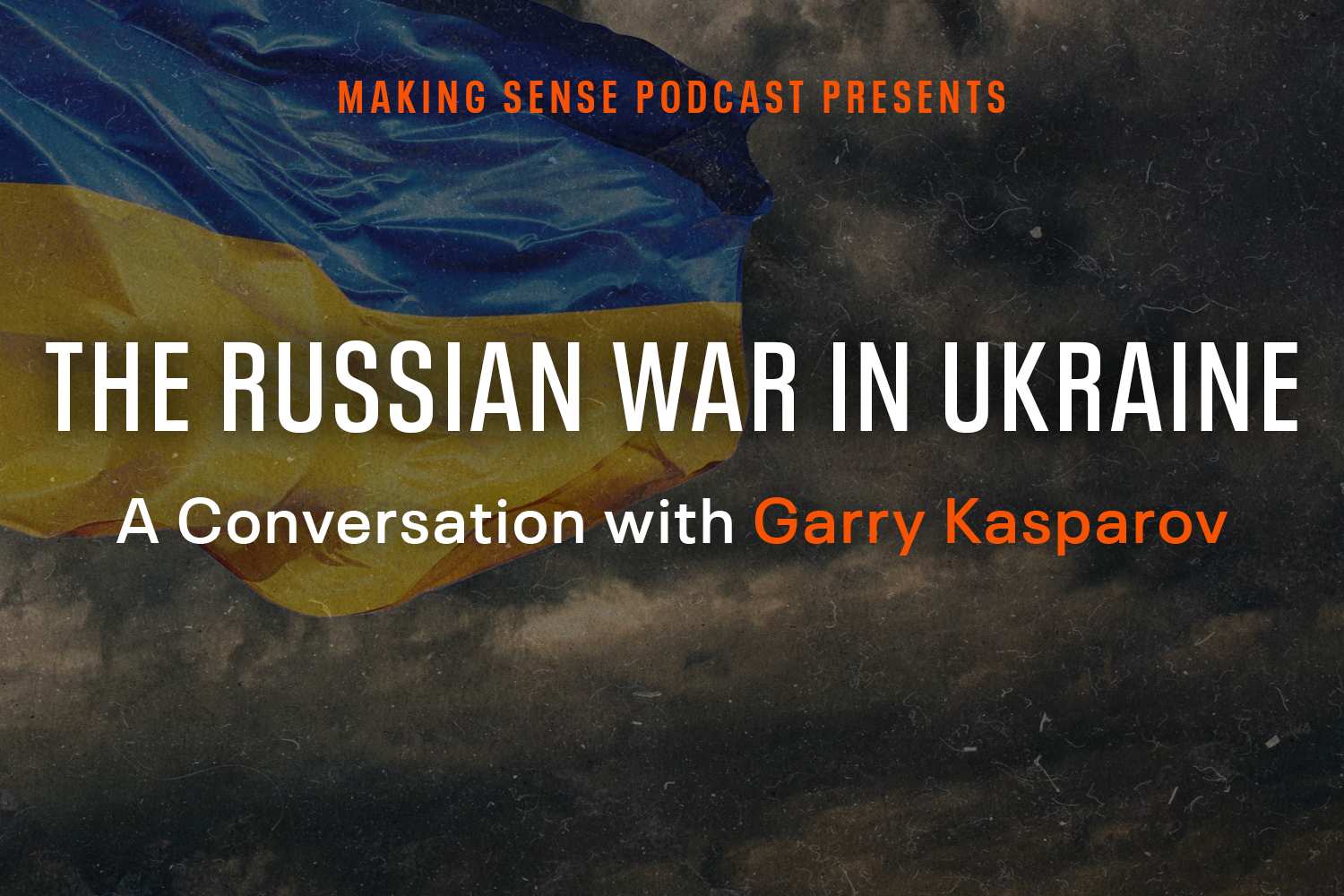Career Tools.
Here are four tools that may help on a career journey.
They are a map, a telescope, a compass and a first aid kit.
A map.
A working life will last four or five decades and will span three broad phases. An early, middle, and late stage.
It is important to know where you are and what are the guideposts that matter at each stage.
Early in the journey.
A life of work is a decades long adventure.
A marathon not a sprint.
During the early years it is important to align with the long-term trends that can serve as a tail wind. Every era has its growth industry and secular forces. Being in the right industries or the right areas in an industry can help you be successful. Conversely, regardless of how good you are and how hard you work, it will be hard to sell typewriters in an age of word processors.
Another key in the early years is not to be discouraged when the landscape or weather turns difficult. Even the best jobs in the early years suck for a third of the time. One should not turn back, stop moving forward or give up. Time dissolves more problems than man or woman solves.
Finally, keep your eyes on the horizon and not fixated on other travelers. You are trying to improve and get better towards a goal versus trying to stop others or getting to the goal faster than others. Improving versus your past self is the only true measure. Competing with others is not beneficial and you may need their help when you hit setbacks and you need others to carry you forward.
Middle of the journey.
It is at this stage where extra-ordinary career trajectories are enabled by finding the right sherpas and focusing on the movement and paths that serve you well.
Find a great boss or mentor and start to focus on what you excel at and gives you joy.
A large part of anybody’s success is driven by who they report to. The right manager and leader not only mentors and teaches but also delegates and promotes. Often these skills not only allow you to thrive, but it enables your manager to progress in the organization paving a path for your own forward momentum.
A decade or two into a career most people begin to understand what they are good at and what gives them joy. It is imperative that one now focusses on these key strengths and not allow your company to try to make you a “well-rounded player” or spend time addressing your weaknesses. Yes, it is important to understand how different components of an organization work and to be collaborative but companies and markets reward expertise, competency, and skills and not some mish mash goo of generalities.
Late in the journey.
Three decades or more into a career one still has a decade or two ahead and there are two keys to ensure that these decades are productive, impactful, and meaning filled.
First, you must check to see if the map you are using remains valid. Just as anyone looking at a map of a world from decades ago would not recognize the names of countries or boundaries today, the same holds true for expertise. It is time to unlearn parts of what you know, transform your way of operating, and potentially re-invent yourself to align with a different terrain.
Second, this is where you need to determine if it makes sense to take a different road or trajectory as you continue your journey. Exits are as important as entrances. Every career in a company has a midnight hour, and the smart ones leave at five to twelve. This is not just elegant but can extend and amplify one’s career and impact.
To read more about the different career phases please read 12 Career Lessons.
A telescope.
As one progresses in a career it is important to look ahead and try to prepare for what may come.
The future of work is unlikely to be what it is today, and it is key that one adapt and align and skill up for what lies ahead.
Due to globalization, demographic shifts and technology change, the world of work will look very different a decade from now in at least four significant ways.
a) Gigs: Larger portions of the work force will be gig workers/free agents even if we work for long periods of time in the same company. Work has become unbundled into component parts and distributed across geographies and time zones. Cloud based and other technologies allow companies to combine and re-aggregate talent and expertise while the same technologies enable people all over the world to access opportunities they did not have. This has been true for many well-paid professions from consulting to the entertainment industry and is not just about Uber drivers and Task Rabbits.
b) Technology enabled and measured: Everything that can be digitized or technologically enabled will be. Most jobs will require us to work in tandem with machines and technology. Increasingly, work will be quantified and measured as it already has in many industries like sales where we measure the number of leads a tele-marketer close per hour or when we calibrate the cost per mile and accident-free driving skills of truckers.
c) Third Connected Age: Just as search, e-commerce, mobile and social changed business we are going to see AI, 5G, AR/VR and Blockchain sculpt new contours into what work is, how it is done, how value and ownership rights are determined and much more. The price of crypto or NFT’s or brands in the “metaverse” are the cosmetic layer of real dramatic change taking place underneath.
d) Older and more diverse workforces: Except for Africa and to a certain extent India the world is aging fast, and people are living longer while population is declining. For a variety of reasons from economic need to delayed pensions to decades of healthy life after sixty, to the desperate need for employees. the workforce is going to grow older and as a result truly multi-generational with employees spanning nearly six decades! This will be in addition to continued diversity in ethnicity and gender.
This view of the future will require us to a) create true competencies and expertise, b) build reputations and networks, c) learn to work with technology while building skills that computers cannot easily replicate and d) be ready to work with a far more diverse work force than ever before
For more clarity on the future of work please read How to Thrive in the Modern Workplace. The Fractionalized Employee. and The Age of the Seasoned.
A Compass.
In a world buffeted by change where a working life lasts decades what star does one steer by?
Find alignment with what you excel at and what makes you grow.
To frame yourself so people understand what you are at good at and at the same time continue to hone and grow your skills it is important to understand your niche, your voice, and your story.
Niche allows you to build expertise and position yourself.
Voice reflects the reality that people do not follow titles, but they follow people and want to know who you are and what you believe in.
Story gives people reason to believe and clarity on how you became who you are. We are all stories, and we need to make sure we know and can narrate ours.
To help you reveal your niche, voice and story come up with three words for each. Three words that describe what you do best at or are expert in, three words that describe who you are and three words that describe the story of your career.
These nine words can help you not only frame yourself but also filter opportunities and has been used with great success by thousands of talented people.
To understand and see the exercise please read Career Turbocharging.
While the Nine Word Exercise serves as a compass that allows you to find and point to your true north, what about a compass that can help you decide which path to take when you come to a fork in your career? When you come to ask yourself or are forced to ask, “should I stay, or should I go?”
We often make the mistake of deciding to stay or go by using the criteria of money, fame, and power as the key decision variables. Leaving one job for another for more money, fame, and power while understandable is not the main framing criteria especially once you are mid-career and relatively successful. The questions to ask are more about freedom, story and growth.
Will you have the freedom and flexibility you need that gives you satisfaction ? Do you have to suppress your story and make it a supporting actor to the story of the company or does your career and company re-enforce the story of your life ? And growth. Can you keep learning and growing as a person and professional?
How best to decide to stay or go? Please read Should I stay, or should I go?
A First-Aid Kit.
Work is important to us all. In addition to making a living, work gives many of us identity, purpose, meaning, and connections.
But work is often filled with stress, pressure, shocks, and challenges. Industries swirl, bosses change, clients pressurize, markets go haywire. Key pitches are lost, opportunities disappear, and mistakes are made. And rest of life does not stop either. Family issues arise, health fluctuates, wars and pandemics break out.
As a result, all of us at some stage or the other find ourselves stressed, angry, depressed, disappointed, lost or more.
All over the world smart companies and leaders recognize that they need to help people take care of their physical, mental and emotional operating systems.
We cannot be productive if we are spent, swirling, emotionally raw and running on fumes.
It is imperative that we find ways to feel better, to repair and to be better.
Sometimes the best thing one can do for one’s career is to focus on oneself and not on the company or the career . A physically diminished and emotionally impoverished you does not serve anyone well.
Feeling and being better is often a combination of small steps that enable compound improvement and focus on filling in gaps. It involves looking at things with new mindsets that embrace openness and improvisation. Finally, one recognizes and aligns with the reality that life combines loss, love, and learning.
Opportunities to repair and heal can be found everywhere and every day and often does not require major cost or time investments and could be found in gardens, bodies of water or in a book of poems.
A distilled compilation of how to look after yourself and others can be found in Repair and Six Ways to Feel and Be Better.
May you thrive!
Here is a list of all the pieces noted in this post for easy navigation.
Connectedness.
Nike’s slogan is “Just Do It!”
In the world we live in we may want to “Just Connect!”
Connectedness or the lack of it is a driving force far more powerful than we might imagine.
There are many types of connectedness.
Connections and Technology: The Third Connected Age.
In 1993 with the advent of the World Wide Web we entered The First Connected Age where we connected to discover and connected to transact. This is today known as Search and E-Commerce which are forces that have given rise to companies like Amazona and Google.
In 2007 we entered The Second Connected Age (which builds on and does not replace The First Connected Age) when we were connected all the time and connected to everybody due to smart phones and social networks. These two advances which we call Social, and Mobile have re-ordered society, politics and culture while creating juggernauts like Apple and Facebook but also enabling everything from Uber to Airbnb to Dollar Shave Club.
The world we live in today is hard to describe to someone thirty years ago.
But we have not seen anything yet
Four new forms of connection will re-order society, work, and the future much more in the next decade than the past three decades.
These are the four new connections that will drive The Third Connected Age.
Data connected to data which is machine learning the form of AI that is most scaled.
Much faster and resilient forms of connection called 5G.
New ways of connecting including Voice, Augmented Reality and Virtual Reality.
New Trust Connection built on the Blockchain.
The entire world of Web 3, Metaverse, Tokens, Wallets and DAO’s (all of which are different from each other but connected to each other) are just one subset of all the changes underway in The Third Connected Age.
It is key that every individual and company pay close attention to the implications and opportunities that The Third Connected Age will bring.
Connections and Humans: God Like Power
Today the capabilities that someone has with a modern smartphone would be seen as “God-Like” Power by people just two generations ago.
We can connect to anyone at any time around the world for zero to no cost.
We can connect to movies and shows across the world and across time.
We can produce, distribute, and monetize our work to a connected audience of billions.
The companies that have become most valuable are those that have leveraged the connected age to give the individual God-Like power.
Human beings are social and want to connect.
We want to be acknowledged and heard.
We want people to know we are here and find ways to make a mark on the passing of time so that people knew we were here.
Connections and the World: Globalization
While Ukraine and Covid-19 among other shocks have tested and questioned the premise of globalization, the shocks underline that we live in a connected world.
Some of the greatest challenges facing us are global in nature from Covid-19 to Climate Change to emerging AI and Biotech regulations and our struggles to deal with these are less about the reality that globalization is out of vogue but that our established governance models and institutions were designed for yesterday versus tomorrow.
Many of our structures were created post World War 2 when there was no Internet, no understanding of the Human Genome or China and India among the top 10 economies of the world.
Today in Board Rooms leaders are working to add resilience as a key to their supply chains and partner relationships versus a previous focus primarily on cost savings. In many cases this is not about being less connected but re-routing connections and adding additional layers of connections to provide optionality and manage risk.
The end of a connected world makes for good headlines, but the genie cannot be put back in the bottle.
Globalization will remain but will move to a multi-polar form of globalization with different countries and regions connecting in different ways to other countries. There will be tighter and weaker forms of connections which while not the most optimal from a financial perspective will be more resilient in the long run and reflect different cultures, beliefs, goals, and agendas.
Connecting the Dots: Creativity/Innovation.
At its heart innovation is about fresh insightful connections and creativity is about connecting dots in new ways to move minds and hearts.
Both require people to inter-connect with each other and be connected to different stimuli and opportunities.
A closed gene pool leads to damaged children which is why cousins are not encouraged to marry.
The power and impact of major cities are that tides of different diaspora and talent inter-woven together. London, Paris, New York, Mumbai, Shanghai are key interconnection points.
The brain works when synapses connect.
Connecting Workspaces: Organizational design.
One of the biggest opportunities for companies is to find ways to work better internally and with external partners.
Better communication, reduced friction, sharing of opportunities and the ability to connect expertise to where the expertise is required can unleash significant growth and margin.
It is one of the reasons every company holds off-sites to enhance teamwork, leverages technology and encourages connection.
And connection between leaders and their teams, a company to a higher purpose and connected values are so central to an organization’s culture.
Companies continuously adapt and swing from centralization to decentralization, top down to bottom-up approaches to find ways that keep people connected enough to the marketplace and each other so as not to fly blind but not so connected that one is overwhelmed with so much information and options that decisions cannot be made quickly.
The rewiring of organizations is really about the architecture of organizational connections.
The Connected = a competitive advantage.
Andy Grove wrote only the paranoid will survive.
Paranoia is anti-connection and in a changing world it leaves individuals and companies deaf, dumb, and blind like The Who’s Tommy. We are unable to compete. (Unless we are playing pinball).
Individuals and companies that connect with a larger eco-system, are open to partners, have API’s (application protocol interfaces) and enabling technologies and platforms to connect with others and a culture where people communicate and disagree honestly will likely emerge with significant long term competitive advantage.
We should seek connectedness.
Because the connected will thrive!
Return to Office
Photography by Scott Firestone.
As companies and individuals navigate a return to the office here are some considerations one should keep in mind.
Photography by Scott Firestone.
The Future of Work will be increasingly distributed and unbundled.
There is no going back to December 2019 only a move ahead into 2022 and beyond.
The Covid-19 lock-downs underlined that the way many of us were working two years ago was not significantly different than the way we operated in 1980, despite a plethora of changes from advanced computing to new communication technologies to a huge increase of women in the workplace.
After two years of working differently with little if any decline in productivity the scales have fallen off our eyes and every individual is re-thinking work in several ways.
The role of work in our lives: The past two years have underlined the fragility of life and given people the opportunity to interrogate the meaning of work in their lives and the nature of how they do it. Inertia had led us to continue to do things that made very little sense but the shock of displacement from Covid has made many re-consider and re-think.
Where we work: Significant portions of a company’s employee base live in a location different than they did two years ago. Many have found their new habitat more conducive to their lifestyles whether it is for economic or family or other reasons.
When we work: The 9AM to 5PM or the 8AM to 8PM need for presence under the watchful eye of management has been replaced by many different ways of getting work done where a person has integrated work and non-work agendas in a way that suits them.
Who we work for: Up to a quarter of “full-time” employees have in the past two years developed a side gig for reasons of interest, passion, and economic need. They have unbundled their income stream from a single employer.
Web 3.0 and new technologies: A plethora of new technologies are increasingly going to enable a much more decentralized, open and composable future. Already companies like Meta are asking their employees to “live in the future” expecting half of the work force to be distributed across the world.
Our thoughts about work today are like Champagne corks. They have swelled with the new possibilities and will no longer fit into 2019 vintage.
Photography by Scott Firestone.
There are many benefits to in-person interaction but most of them do not require sitting in an office all day or for five days a week.
The three key benefits that in-person interaction bring are learning, relationship building and problem solving/creative idea generation.
Learning: There is a belief that some flavors of learning uniquely come from watching others in action or being mentored by bosses in an apprentice/guild like model. This is probably true for many industries and particularly for people early in their career or new to a company.
Relationship/Network Building: While relationships can be built online (for example dating apps), the reality is that some in-person meetings can help deepen and strengthen relationships. The best relationships combine the physical and the virtual, so some in-person interaction makes sense for many.
Problem Solving/Creative Idea Generation: If innovation is about fresh insightful connections, then the give and take between people can be a real asset. Whether it be the unexpected interaction between two colleagues or the in person back and forth of a brainstorming, these are benefits that result from being together.
But we should recognize that for creative brainstorming many people would leave the office to go off-site, building relationships and networks often took place at restaurants, bars, coffee shops and events and learning occurred at conferences and specialized training programs.
The key is that many of these occur out of the office, take up less than a third to half of a working week and need to be scheduled and programmed versus just happening by chance.
Photography by Scott Firestone.
Unbundled and Distributed work enable significant competitive advantage to companies that embrace them.
Imagine if you were a company starting today and were asked to choose between Door A and Door B.
Door A: You are limited to accessing talent who can afford to live near your headquarters or must work full time. This talent only works for you and is reliant on their entire income on you which could make them loyal but also potentially less likely to challenge the status quo since they may have limited optionality.
This door gives you great control over your people and a return to a simpler way to manage and organize.
Door B: You can access talent from anywhere in the world and they can work for you half, three quarters or full time giving them and you the ability for variability in employee cost and gives them the flexibility to fit their work into their life versus fitting their life into work.
This door gives you the ability to hire diverse talent, attract people from everywhere in the world while giving you flexibility on cost management but increases complexity and requires enhanced management styles.
For businesses needing to attract white-collar and knowledge workers asking people to return to the office for three or four or five days a week (versus coming together for specific training, creative or relationship building events) is in effect choosing Door A and will likely leave these firms at significant competitive disadvantage to companies who choose Door B and find a way through its initial messiness and complexity.
Photography by Scott Firestone.
In-Person interaction should be the focus versus returning to the office.
Six simple steps for every company to consider:
Future forward: Recognize that the future does not fit in the containers of the past and a four- or five-day week in the office is a container of the past. Communicate that your plans are about moving ahead to build on what has been learned in the past two years and not to return to some nostalgic halcyon days of yore.
Celebrate benefits of the past two years: Call out the significant benefits from flexibility and diversity to more that the world of unbundled and distributed work has enabled.
Re-enforce the importance of in-person: Explain why in-person interaction (supplementing just virtual connections) are important to your ability to compete, build talent, enhance relationships, and culture and generate creative solutions and solve problems.
Focus on the synergy: Emphasize that the company is trying to integrate the power of in-person with the flexibility of virtual work to build a solution better than either one separately and it will a) require some flexibility per individual and b) some iteration and constant learning.
Schedule events versus just days in the office: Program events from training to brainstorming to team get togethers both in the office and outside the office. Do not ask people to return to the office but re-turn to specific programs. An individual is not being asked to come back to the office which many do not find productive for “heads down” work of reading, creating documents or presentations but for “heads together” or some “heads up” work of training, relationship building and problem solving. If you have folks returning two days a week, make sure there is something programmed around these events those two days versus just having people sit around.
Freedom within a framework: Allow for some freedom within the framework in how many days someone returns to working together. Some folks may want to be together more than the prescribed two days or require more time together if they are going through orientation and training while others may need the flexibility initially of one or two days a month.
These steps communicate that you are looking forward, trying to balance the best of both worlds, and reflecting that talent looks for freedom, to fit their work into their life story and want growth (skills, personal development, career opportunities, income).
This approach is likely to attract and retain talent while ensuring a company’s culture and competitiveness.
It will not however work for everyone and a company at some stage may have to part with talented individuals who refuse to be flexible in their ways rejecting all in person work or working to undermine the new model. While losing talent especially stars is not ideal, a company is more than any one or two or three individuals and a certain framework is essential for fairness and cultural cohesiveness.
The real challenge will be on leaders and managers who will now need to truly up their skills in enabling, inspiring and motivating talent.
Greatness.
Photography by Antony Spencer.
Greatness is everywhere if we care to look and find people to admire.
These people are not just the powerful and famous.
They can be teachers, nurses, craftspeople, social workers, and story tellers.
Observing and reading about greatness reveals a common pattern.
The great have been forged in a furnace of challenges and formed in a foundry of experiences.
Their challenge, and experiences have led many to some foundational beliefs, core fundamentals they leverage and first principles they turn to.
They have an ability to combine great focus with flexibility in ways that make them a force.
Photography by Antony Spencer.
Forged and formed in the furnace of time and experiences.
Even if one is lucky to born with prodigious skills it takes time to hone one’s expertise where it can have a powerful impact.
Only with the feedback and continuous iteration that comes with experiences does one learn to connect dots, see patterns, and identify processes that work.
Malcolm Gladwell proposed that it takes 10,000 hours of practice to build expertise.
Many people who are seen as “overnight successes” have spent thousands of nights learning.
Time is its own unique furnace but so are moments of acute challenge.
Recently many leaders whether they be CEO’s, schoolteachers or nurses were forced into the furnace of Covid-19 and its challenges. Many rose to the occasion and in midst of this great distress their greatness was formed.
Most recently millions of Ukrainians and their leader have revealed their greatness.
Under pressure people who you thought might be coal turn into a diamond.
The pressure twists and transforms them into new shapes.
The furnace of challenges and the foundry of experiences is what sculpts and chisels greatness.
Photography by Antony Spencer.
Foundational Beliefs. Fundamentals. First Principles.
Great practitioners often have a framework of some fundamental and foundational beliefs and first principals.
A way of doing or filtering, a check list, a smell test, a feeling of prescience or a sixth sense.
Some things that they have come to believe as absolutes, such as a belief reality must be faced, facts are stubborn things, and one cannot look away from the data. There may be first principals on how to deal with and inspire people or how to problem solve or best ways to integrate different companies and cultures.
There is a “way” or “ways” that they use to frame and filter what they see.
This fundamental understanding allows them to see patterns that many others cannot just like great chess players can sense an underlying design to the game or great investigators combine what seems to be disparate dots to identify patterns.
Photography by Antony Spencer.
Focus and Flexibility combining to create a Force.
If you see Monet’s water lilies or listen to Beethoven’s Late Quartets, you will find utter simplicity and focus on some key elements fused with a flexibility of craft and style that combine to have an impact and force.
The best in a field can speak and explain with simplicity by focusing on what matters and leaving out the rest while customizing (flexibility) the communication to ensure the outcome.
The best nurses or doctors know exactly what to focus on when treating a patient but are flexible in how they apply their craft to ensure the best medical result.
It is an odd combination of The Mandalorian, Lawrence of Arabia and Yoda.
The focus is on recognizing there “is a way”, the flexibility is in understanding that when applying this to a situation “nothing is written” and by combining these two the “force is with them”.
Photography by Antony Spencer.
Learning from the great and unleashing our own greatness.
Look around and most people you see are great at something or the other. We all have superpowers and instead of focusing on our weaknesses we may want to hone in on our strengths and celebrate and leverage the strength of others.
First, we must realize that time, experience, and circumstances are necessary to get to a level of greatness. It cannot be hurried or willed into being. Seasoning matters.
Second, we should interrogate ourselves to better understand what fundamental skills, foundational beliefs and first principals drive us. Better understanding these allow us to confirm their validity and if so leverage them. We should ask those that we admire what they leverage and filter to make decisions.
Third, we should both watch and learn from ourselves and others to hone our ability on how to keeping our eye on what matters and learn that less is often more.
Finally, be open to new data that allows us to flex and iterate our way to remain relevant.
Next time observe those around you and yourself.
The potential for greatness is everywhere.
Find something, somebody, or some ways to admire.
New Narratives
The human tragedy on the ground in Ukraine is hard to fathom or look at and no amount of imagination can match the pain and the destruction on the ground.
It is one of the reasons that Putin has for the first time in his twenty year reign shut down everything that is not under his control (including social media and every small independent newspaper, broadcast or online service) and has promised 3 year to 15 year sentences for even carrying a placard with the word “War” on it ( because in Orwellian speak it is “a special military operation” to liberate and “de-nazify” a country).
But the world of storytelling and media has changed. Not just in the past decade but very dramatically in the last two or three years and this changing narrative landscape plus a new generation of narrators and voices combined with new media behaviors is increasingly difficult to control from top down.
This post samples these new narratives through the lens of the Ukraine war…
New Narrators/New Narrative Publications.
Today arguably among the best writers on the war if not the best writer is Julia Ioffe from a new journalist owned and controlled publication called PUCK which believes “ in this new media age, the creator is the heart of the business equation”
Julia is deeply sourced, rational and tries to get to the truth even if we do not like to hear what she reports.
In this piece which includes an excellent interview she notes that half to two-thirds of Russians support the Ukraine war. That most Russians have not yet felt the big impact of the sanctions since it is really a tiny fraction of the population who has been first hurt (the upper middle class and rich who own the assets and use rouble/dollar accounts that have plummeted). The impact of the sanctions will begin to impact the country shortly with inflation and some initial shortages ( the closing down and discontinuing of the major global brands in the country will also prompt some questioning and therefore is likely to be very impactful).
However, there is a vulnerability for Putin which is that Russians under 35 who because they did not grow up during the Soviet era and most importantly because they do not get their news from newspapers and tv are anti-war and it is through this information wormhole plus the shrinking of the economy that will pierce Putin’s media black hole.
Here is Julia on Putin’s black hole.
To read the entire piece you may have to subscribe which I highly recommend for two reasons. First these are some of the best writers anywhere. But as importantly I believe like Substack (where you are reading this), Puck is another new model where the creators are grabbing back control and their livelihoods from aggregators and traditional content owners. This is just a preview of the explosion in the way we hear, see and fund a large part of narrative from creators as we enter the Web 3.0 world.
The Tik-Tok Take-Over
While Puck, Substack and other new forms are scaling we have already seen the power of social media particularly Tik-Tok in how narratives are made, and opinion shaped. In a wonderful piece from the New Yorker we learn that…
“The invasion of Ukraine isn’t the first conflict to play out over social media. The Arab Spring uprisings and the Syrian civil war used Facebook and Twitter to organize protests and broadcast D.I.Y. footage. But in the intervening years, social platforms have become more geared toward multimedia, and smartphones have become better at capturing and streaming events in real time. Large numbers of Ukrainian civilians are taking up arms to defend their country against Vladimir Putin’s reckless imperialism; they’re also deploying their mobile cameras to document the invasion in granular detail. The war has become content, flowing across every platform at once. One video that has circulated in recent days appears to show a Ukrainian man gingerly moving a mine, a cigarette dangling from his mouth, off a road and into the woods. A single tweet earned the clip more than ten million views, but it could also be found on YouTube, TikTok, and the sites of various news publications. Perhaps owing to Western sympathies with the plight of Ukrainians, their videos have overwhelmed American feeds in a way few foreign news stories ever do.”
“The flood of TikTok videos is perhaps more likely to evoke our bemused awareness, a feeling of sympathy that lasts only long enough to keep us scrolling. Yet as the Russian convoys outside of Kyiv continue attempting to penetrate the city center, traditional news organizations are pulling their journalists to safety. Social media is an imperfect chronicler of wartime. In some cases, it may also be the most reliable source we have.”
More here…https://www.newyorker.com/culture/infinite-scroll/watching-the-worlds-first-tiktok-war
Influencers today often have more power than media companies.
Given the power of Tik-Tok influencers both sides are reaching out and trying to influence the “influencers” but at the current time the Russian ability to dis-inform is less effective the global army of influencers arrayed against it each with their unique audiences, voices and styles.
The Biden Administration earlier this week briefed influencers…
“On Thursday afternoon, 30 top TikTok stars gathered on a Zoom call to receive key information about the war unfolding in Ukraine. National Security Council staffers and White House press secretary Jen Psaki briefed the influencers about the United States’ strategic goals in the region and answered questions on distributing aid to Ukrainians, working with NATO and how the United States would react to a Russian use of nuclear weapons.
As the crisis in Ukraine has escalated, millions have turned to TikTok for information on what is happening there in real time. TikTok videos offered some of the first glimpses of the Russian invasion and since then the platform has been a primary outlet for spreading news to the masses abroad. Ukrainian citizens hiding in bomb shelters or fleeing their homes have shared their stories to the platform, while dangerous misinformation and Russian propaganda have also spread. And TikTok stars, many with millions of followers, have increasingly sought to make sense of the crisis for their audiences.
The White House has been closely watching TikTok’s rise as a dominant news source, leading to its decision to approach a select group of the platform’s most influential names.
Teddy Goff, a founder of Precision Strategies, a consulting firm, said that the White House’s strategy of embracing the next generation of media voices was crucial. “There’s a massive cultural and generational shift happening in media, and you have to have blinders on not to see it,” he said. “The reach of a piece in a traditional news outlet is a fraction of what a big TikToker gets.”
The entire article is here…https://www.washingtonpost.com/technology/2022/03/11/tik-tok-ukraine-white-house/
Imagine five years ago reading the paragraphs above. You would ask what are “Zoom”. “Tik-Tok” and “Social Media Influencer”?
If it is real time it is Twitter time.
After Tik-Tok, Twitter is being leveraged to shape and keep up with new narratives.
There is a Ukraine-Russia list (a list is composed of a number of people worth following on a topic, a.k.a. members) that you can engage with by just following the list versus each person. The list gets updated as the curator of the list adds new members to the list. The best list to keep updated in real time on Ukraine is the Ukraine-Russia list curated by Noah Smith. It has a list of 75 key accounts (members) worth hearing from.
It is followed by many journalists and leaders of countries.
You can follow the list by clicking here :https://twitter.com/i/lists/1492242776825552896
It is hands down the go to source for real time news, analysis and much more.
Imagine access like this to world class experts with one click for free without Twitter!
A single voice and a shared list can shape narrative in a world of ESG where customers and employees hold their leaders and bosses accountable.
“Founder of the Chief Executive Leadership Institute, Sonnenfeld has spent four decades pushing CEOs to act to benefit society, not just shareholders, on social issues ranging from gun control to voting rights. But nothing has drawn as much attention or support from business leaders, media, or the public as his inventory of companies that have cut ties with Russia.
“So many CEOs wanted to be seen as doing the right thing,” Sonnenfeld, 67, said in a telephone interview. “It was a rare unity of patriotic mission, personal values, genuine concern for world peace, and corporate self-interest.”
The list, updated hourly by his research team, has grown to more than 330 as of Friday.
“What these lists do is give courageous CEOs the confidence to keep going, and the wannabe courageous ones the reinforcements to deal with their boards so they come off as responsible business leaders when they can see a stampede of their peers leaving Russia,” Sonnenfeld said.
Sonnenfeld said the “laggards” followed this week, when the public relations arms of more than two dozen consumer products, fashion, fast food and packaged goods companies contacted him in a single day to be included.”
To see the entire list and much more on how companies are grappling with this situation please click here: https://som.yale.edu/story/2022/over-300-companies-have-withdrawn-russia-some-remain?te=1&nl=peter-coy&emc=edit_pc_20220309
The Power of Podcasts.
New narrators and voices and newly empowered established narrators and voices are leveraging a spectrum of new techniques and media, one of which is the humble voice in your ear via podcasts.
Podcasts are amazing in their ability to unleash the eye and the heart of your imagination and reason thorough the power of spoken word. They are cheap to produce and can be heard everywhere including in the dark. Most importantly they can truly go deep into a subject and bring in superb voices who are deeply informed and knowledgeable to you.
Sam Harris this week had a live conversation over Zoom (but then provided as a podcast) with Garry Kasparov the Chess Grandmaster and champion who has been warning about Putin for years. This conversation will unleash new perspectives. (Sam Harris podcast requires a subscription but 40 minutes of the interview are free, and you will learn a lot from it)
Here is the link: https://www.samharris.org/podcasts/making-sense-episodes/275-the-russian-war-in-ukraine
Web 3.0 is playing its part.
Web 3.0 is so misunderstood by so many often equated with the Metaverse or valued by the latest NFT craze. It is much more and just a couple of its key elements (Wallets and DAO’s Decentralized Autonomous Organizations) are described by Packy McCormick in amazing Not Boring Substack.
“Ukraine Crypto Wallets
If you’re looking for a way to donate crypto, the Ukrainian government solicited donations in ETH and BTC on Twitter:
The addresses have been verified, and I donated without issues. Over $5 million (over 50 million since this piece was written) has been donated via ETH alone, and you can see the wallet on Etherscan here for live updates (the amount on Etherscan is lower because they sweep out money periodically).
UkraineDAO
UkraineDAO, organized by Pussy Riot and PleasrDAO, among others, is taking a slightly different approach to fundraising, more in line with ConstitutionDAO with a twist.
The group set up a PartyBid on an NFT of a Ukranian flag so that anyone could contribute any amount. All contributors will receive $LOVE tokens which “have NO utility nor value but are a beautiful testament and reminder of your contribution to a noble cause.” UkraineDAO has raised $3.3 million already, and proceeds will go to Come Back Alive.
Lastly, this Notion doc has a long list of ways to help, financial and otherwise. It’s the most comprehensive I’ve found.”
You Tube.
You Tube remains as impactful and important as ever.
Please watch the video embedded above of a speech that the President of Ukraine gave to the British Parliament.
You will see what a leader and the ongoing power of William Shakespeare and the oratory of Winston Churchill sound like in combination.
The video is being watched all over the world millions of times a day can teach us all about why leadership matters, right matters, history matters, words matter and all of these combined with truth amplified by the power of new narratives will play a huge role in the difficult days ahead.
To Be !

